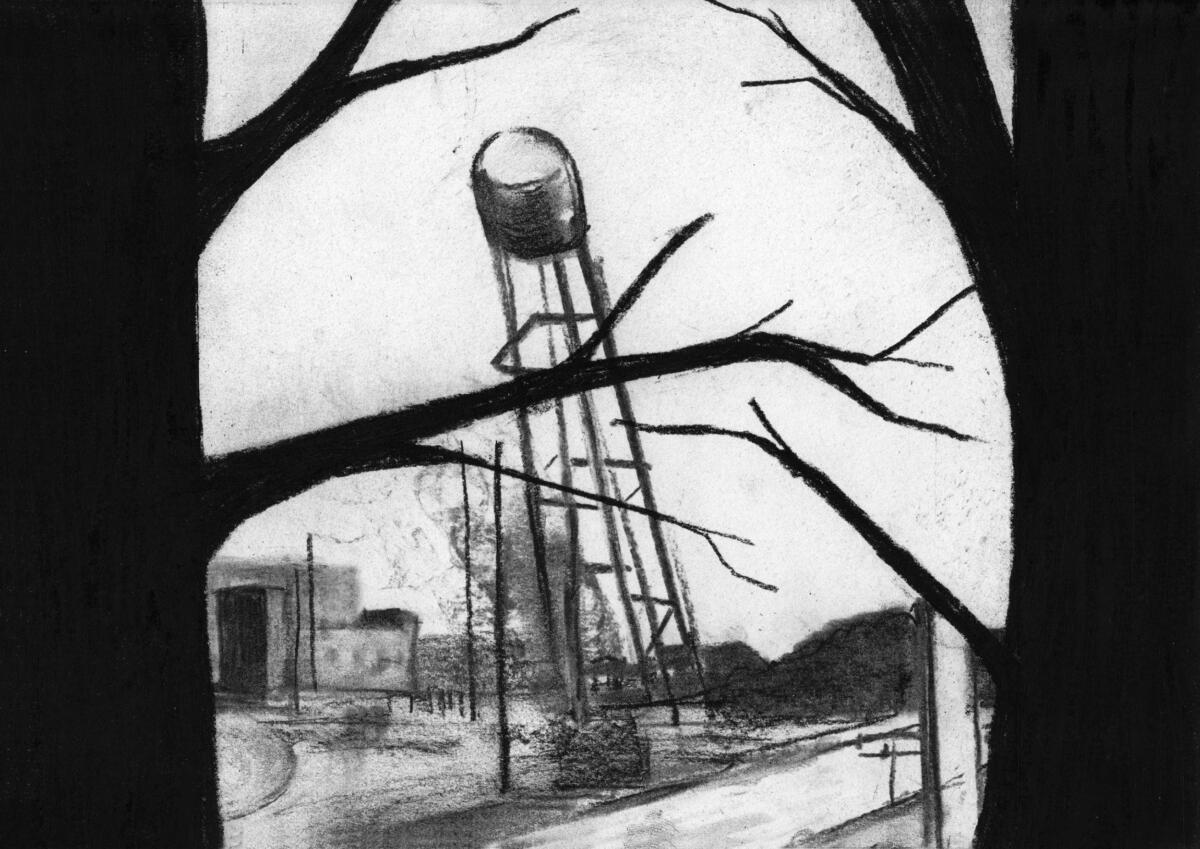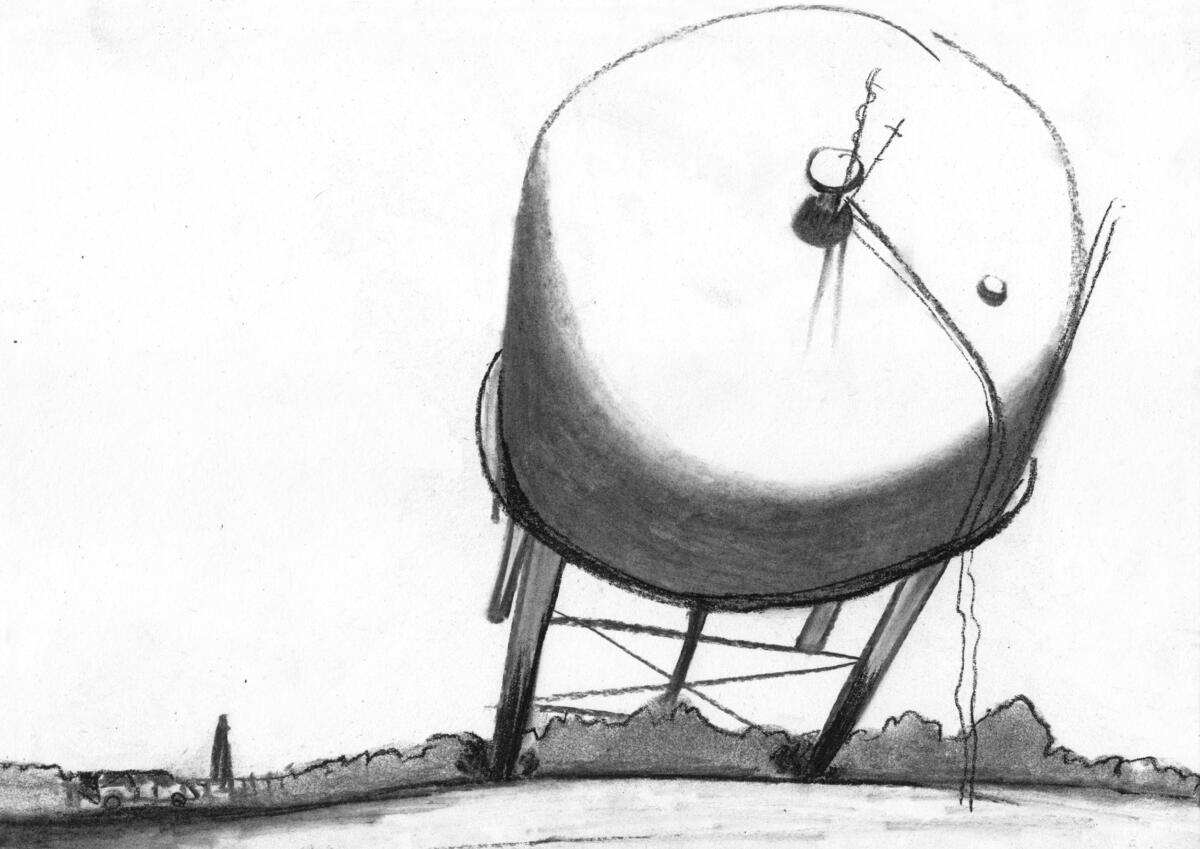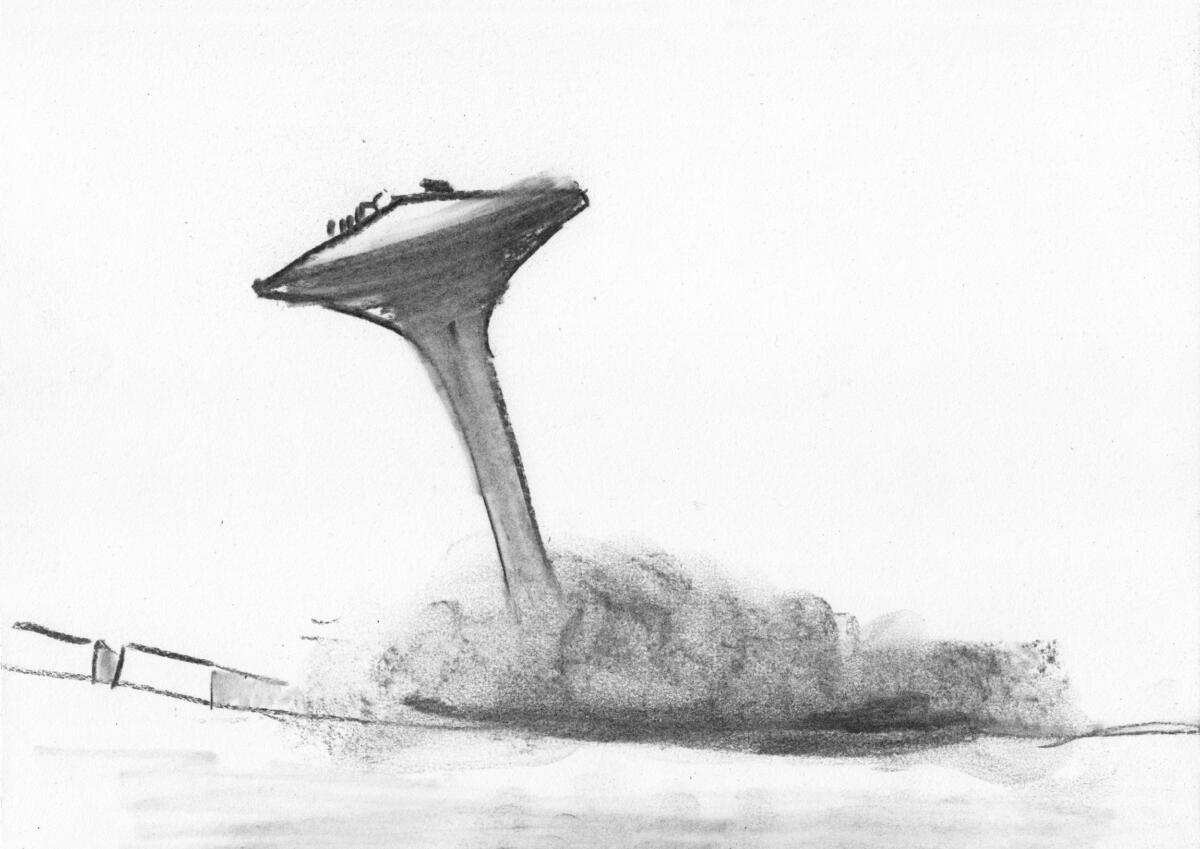
Dominik Kuboń: I have just closed your book „Water towers. 2020”, which is in fact an exhibition… Why did you decide to present your drawings in this form? Did the uncertainty around the closing and opening of art galleries affect this?
Tomasz Kręcicki: Yes, it was definitely about finding an alternative to presenting it online. I had the feeling that it would be best if this series of works could still be shown in 2020, but because of the pandemic, galleries were opening and closing and attendance was dropping in response . Besides, it’s really hard to exhibit 100 drawings, you need a lot of frames to show the work properly.
When I started working on these drawings, Agata Biskup visited me in my studio and it was she who suggested that the exhibition should be a book. From that moment the book came into being very quickly. We had a few meetings and came up with some cool ideas. As the curator, Agata had a few great solutions, like ending the book with the drawing “2020.” We worked on this book as we would work on an exhibition.
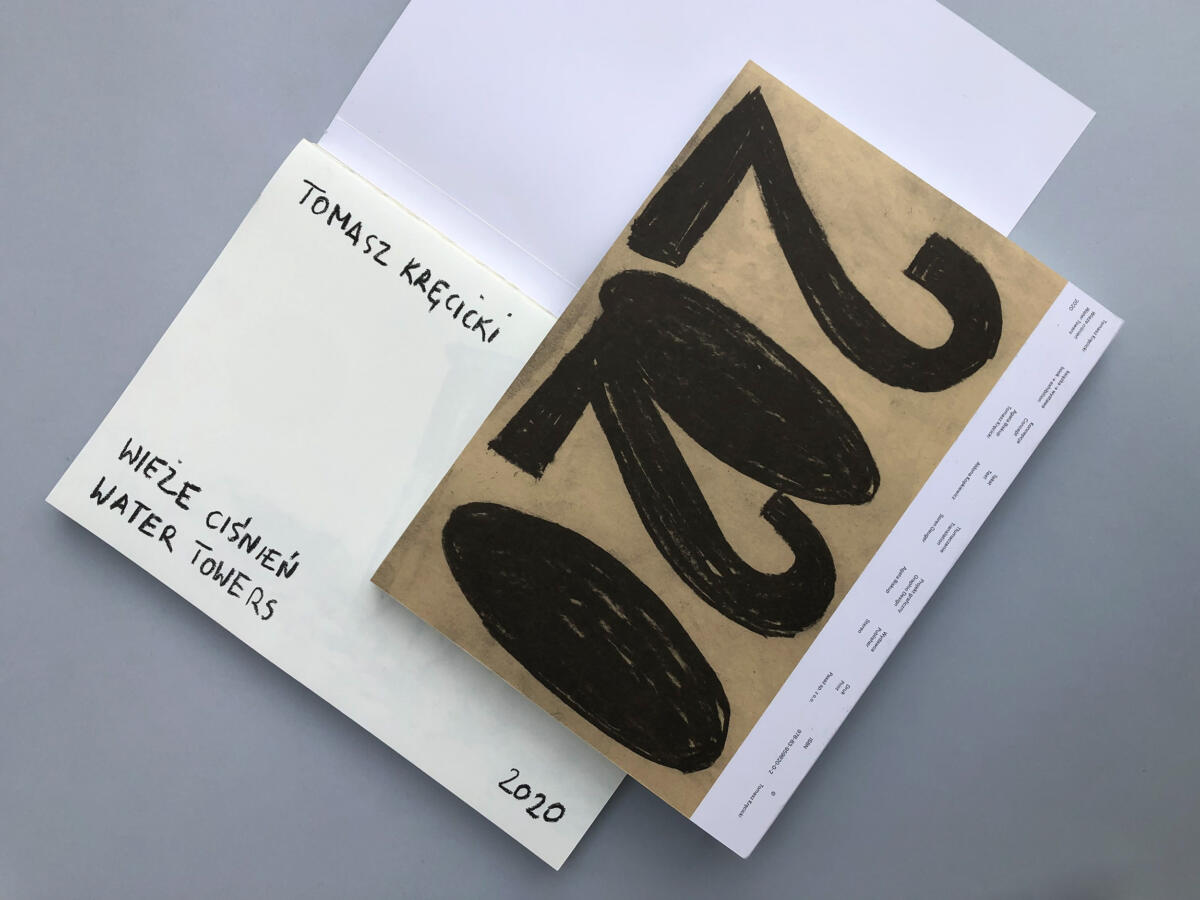
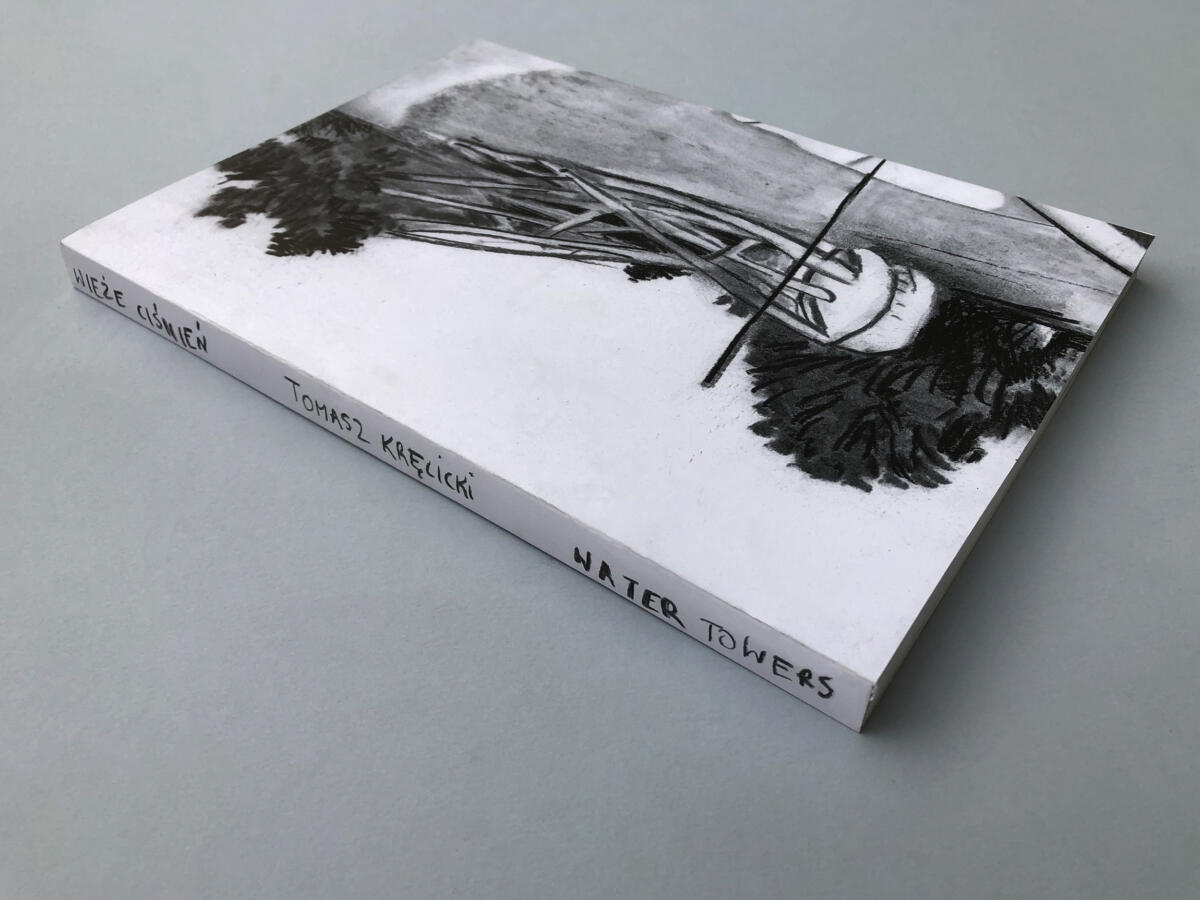
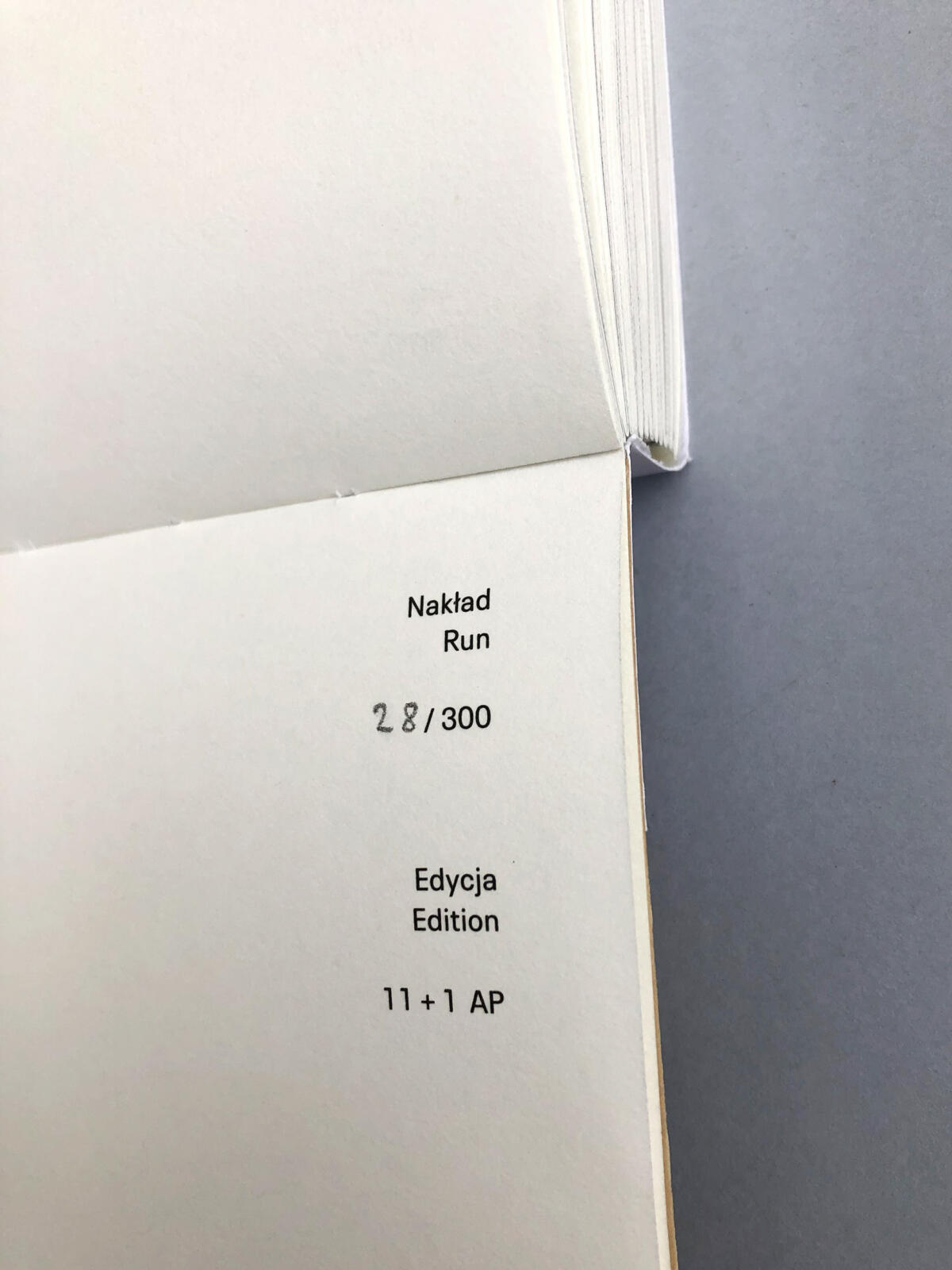

In the introduction by Aldona Kopkiewicz one reads that “the time of a pandemic is also a time when we are reduced to ourselves, we can no longer run away”. Is the book an opportunity to pause? Or maybe it works as a witness to the aforementioned escape from what we have to now face?
Yes, it is certainly an opportunity to stop and stay longer with the works than in a traditional gallery show. You can sit with this book-exhibition in your own armchair and look through it as long and as selectively as you want: from beginning to end or vice versa. This is what I like about the format of a book, because in the case of a traditional exhibition at a gallery or some other place, although we are in direct contact with the original works, the viewing time is limited, our ability to focus is different, there are other people and various distractions all around.
Why water towers? Do the constructions presented in the book exist in reality or are they fabricated?
I found a video of collapsing towers on YouTube, suggested by an algorithm. Before that I had been watching compilations of catastrophic films like storms at sea, massive waves, tsunamis, building demolitions, shipping accidents. The monumentality of these events is terrifying but also attractive… people like to watch these things when they themselves are at a safe distance. It sounds a little creepy…
I am intrigued by such large-scale deconstruction. I, too, can watch the controlled demolition of a large building from behind a screen, but I would not like to be an eyewitness or a participant in this type of real-life catastrophe.
So to answer your question, yes, most of these drawings are based on stills from various films documenting the demolition of water towers all over the world. I once paused a video as I was watching it because I realized that if I didn’t know the context, it would be hard for me to recognize what was actually happening in this situation. Because these videos are often recorded with old phones or CCTV cameras, the quality is poor. Falling towers frozen in a frame look a bit like some primitive space rocket from a 1960s sci-fi movie that has no chance of taking off, or a missile slamming into the ground, or some enormous jellyfish or other gigantic, ominous creature…
The repetition of the water tower theme reminded me of “American Surfaces”, a photo book by Stephen Shore, published in 1999. There we can find photographs of gas stations. I mention this publication because on one of the towers I found the words “Rowlett Texas”. Both in Shore’s and your works, the very gesture of repetition is puzzling. How do you relate to it? What purpose does it serve?
Several people have told me about these photographs in relation to my book, I have to see them. It’s a shame that I didn’t know about them, especially as they seem to be a classic reference. When it comes to the gesture of repetition, it’s frequently present in my creative work. I never paint or draw a motif only once or twice, I am always looking for different solutions, color compositions, and methods of representation. In general, multiplication is interesting. I recently bought a basil plant, cut the strongest stems straight away and put them in water. When they are cut well, they take root and grow nicely in pots until the end of the year. I also spent the last couple of weeks looking for the perfect color of cold beetroot soup (Pl. “chłodnik” – note: EB). I realized that I would not be able to succeed by sitting in my studio, using only photos that I found on the web, so I went out to different places where they served the soup and compared the colors to a color chart.
The water towers seem to be the main characters of your compositions. I see how they make the drawings more dynamic… Do their collapses depicted in the book address a particular problem?
In the beginning, I drew a few of these landscapes without much thought, I just liked their weirdness. Then I realized there was something else about these falls that were related to the suspension of life brought on by the pandemic. This happened during the first lockdown when nobody knew what to expect, everyone was just waiting. Everyday life had been stripped of various pleasant situations, such as spontaneous meetings, going out for drinks, going to other places, travelling. The repetition of this theme is an obvious connection, the expectation and anticipation for something to happen.
Then, I think, another lockdown happened and at the same time huge protests against the anti-abortion law began. It was another event that in some sad way defined the character of 2020. It was a strange time involving a feeling of helplessness and again, waiting, and believing that if so many people are protesting in the streets, then it really is possible to change reality.

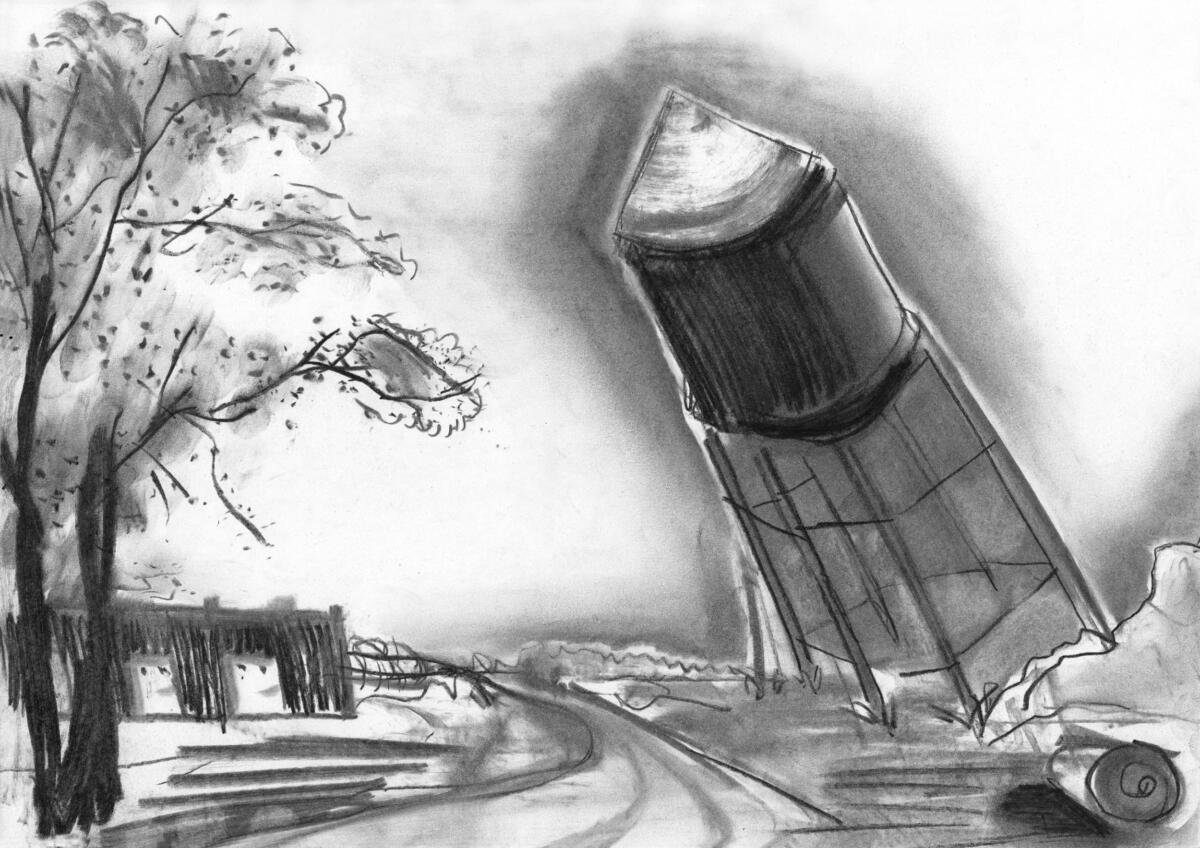

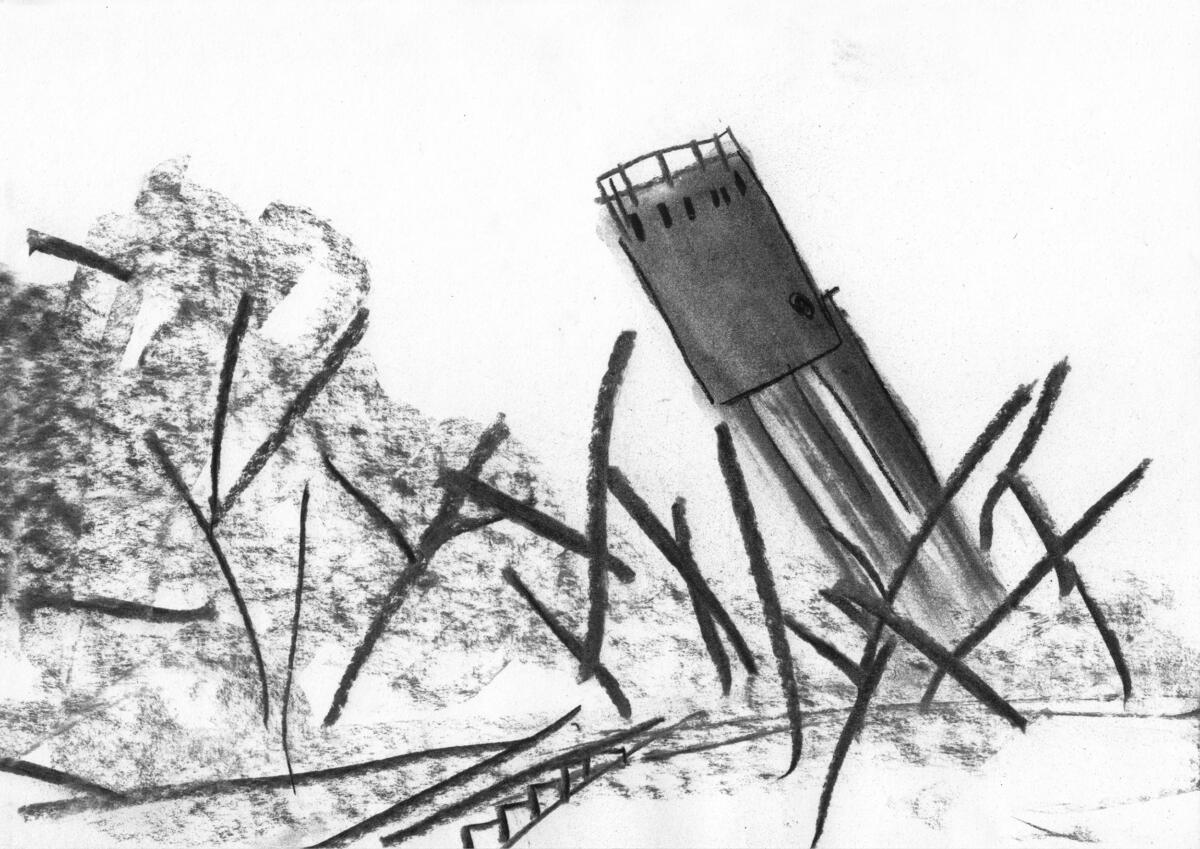
How do these tower structures affect their surroundings? What effect do they have on other buildings, people, nature…
I believe that these are unique objects. No matter who I talk to, everyone has their own, personal water tower to reference. From my childhood, I remember one near Kielce, just outside of Chęciny. We used to drive past it on the way to Kraków. It’s a white ball on a blue leg, one of the simpler and more typical designs, I was fascinated with it as a child. You see an ordinary landscape and suddenly there’s such a nice, colorful object. I was surprised to learn that there was water in there. But then it seemed reasonable to me – since it was painted blue there was some logic to it.
I am also wondering about the state of water on our planet… Water towers are used to collect water, and in your works they are deprived of the function they were supposed to fulfill. The water collected in them is meant to serve as a certain reserve, as protection. When their structure is damaged, we lose this safety, just like we lose water…
Indeed, they are very distinct structures, one can compare them to an organ of a large organism (e.g. a city or a factory) that is responsible for a very specific and basic function within that larger system. It stores water, but also maintains the pressure for the municipal sewage system. It’s an interesting object, especially if you look at it from a macro scale. The destruction of this structure could be interpreted in the way you just mentioned. This is a very interesting observation that I was thinking about while working on some of the drawings. Often there are people depicted in these landscapes – watching scared and helpless, or perhaps just foolishly curious.
Nevertheless, I have not titled this series in a way that would lead to just one explanation, I am far from such direct interpretative tropes. First and foremost, these drawings are strange landscapes, and mementos of this past year.
Imprint
| Artist | Tomasz Kręcicki |
| Title | Water Towers. 2020 |
| Index | Dominik Kuboń Tomasz Kręcicki |

